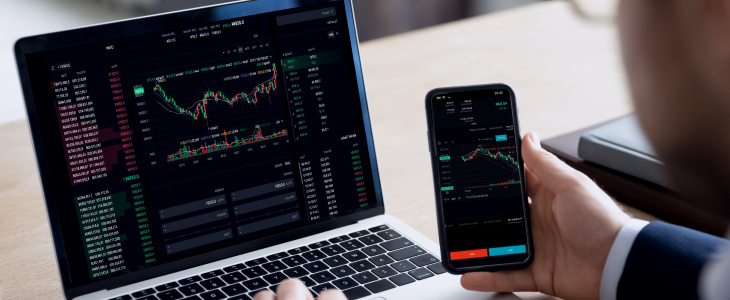
In recent years, the financial landscape has witnessed a significant transformation with the advent of technology. One of the most impactful innovations has been automatic forex trading, which has redefined how traders interact with the foreign exchange market. By leveraging technology and algorithms, traders can now execute trades automatically, eliminating emotional decision-making and streamlining the trading process. In this article, we will delve into the nuances of automatic forex trading, its benefits, trading strategies, and essential tools. For more information on this topic, you can visit automatic forex trading latam-webtrading.com.
What is Automatic Forex Trading?
Automatic forex trading, often referred to as automated trading or algorithmic trading, involves the use of computer programs and algorithms to execute trades in the foreign exchange market automatically. These programs analyze market trends, historical data, and user-defined trading parameters to make buy or sell decisions without human intervention. The primary aim is to capitalize on market fluctuations efficiently and consistently.
Benefits of Automatic Forex Trading
There are several advantages to using automatic trading systems in forex. Some of the key benefits include:
- Emotion-Free Trading: One of the most significant advantages of automated trading is the elimination of emotional biases. Traders can set up their trading algorithms to execute predefined strategies, free from fear, greed, or other psychological influences that can lead to poor decision-making.
- Time Efficiency: Automated systems can analyze multiple currency pairs and execute trades around the clock without the need for constant monitoring. This allows traders to take advantage of opportunities even when they are away from their trading screens.
- Consistency and Discipline: Automated trading systems execute trades based on predefined rules and strategies, ensuring a higher level of consistency and discipline. This helps traders adhere to their trading plans, avoiding impulsive trades.
- Backtesting Capabilities: Traders can backtest their strategies using historical data to determine their effectiveness before deploying them in live trading environments. This feature allows for optimization and refinement of strategies based on past performance.
How to Get Started with Automatic Forex Trading
Getting started with automatic forex trading requires a combination of the right tools, knowledge, and a well-thought-out strategy. Below are steps to guide you through the process:
1. Choose a Reliable Trading Platform
Start by selecting a reputable trading platform that supports automated trading. Look for platforms that offer features such as expert advisors (EAs), backtesting capabilities, and a user-friendly interface.
2. Develop or Choose a Trading Strategy
Before automating your trading, define a clear and coherent trading strategy. Your strategy should outline the criteria for entering and exiting trades, risk management rules, and overall trading goals. You can either develop your own strategy or adopt existing ones, which can often be found online or shared within trading communities.

3. Implement Automation Tools
To automate your trading activities, you need to utilize trading robots or expert advisors. These are programs designed to execute trades based on the parameters you set. Familiarize yourself with the programming necessary to create or customize these tools if you plan to develop your own automated system.
4. Backtest Your Strategy
Before going live, thoroughly backtest your trading strategy using historical data. This will help you identify potential weaknesses in your strategy and allow you to make adjustments accordingly. Backtesting provides insights into how your strategy would have performed in different market conditions.
5. Monitor Performance
Even though automatic trading reduces the need for constant monitoring, it is essential to regularly review the performance of your automated system. Analyze its trades, assess profitability, and make necessary adjustments to ensure that it aligns with your goals.
Understanding Trading Signals
Trading signals play a crucial role in automatic forex trading. These signals are indications to buy or sell currencies based on analyses of market trends and data. Automated trading systems can generate these signals based on various factors, including:
- Technical Indicators: These are mathematical calculations based on price and volume data. Common indicators include Moving Averages, RSI (Relative Strength Index), and MACD (Moving Average Convergence Divergence).
- Market News: Economic data releases, geopolitical events, and other news can impact currency prices. Automated systems can be programmed to respond to certain news events, executing trades based on expected market reactions.
- Chart Patterns: Traders often look for specific patterns on price charts, such as head and shoulders, flags, or double tops and bottoms, to make trading decisions. These patterns can inform automated systems as they analyze historical data.
Challenges of Automatic Forex Trading
While automatic forex trading offers numerous advantages, it is not without challenges. Some of the challenges traders may face include:
- Market Volatility: The forex market can be extremely volatile, and automated trading strategies may not always predict large price swings accurately. Sudden market changes can lead to significant losses if not properly accounted for in the trading strategy.
- Technical Failures: Automated trading relies heavily on technology, and any technical failure, such as server outages or internet connection issues, can impact trading performance. It is crucial to have fail-safes in place to minimize risk.
- Over-Optimizing Strategies: Traders may fall into the trap of over-optimizing their trading strategies during the backtesting phase, leading to poor performance in live trading. It’s essential to strike a balance between optimization and maintaining realism in strategy performance.
Conclusion
Automatic forex trading presents an innovative and efficient approach to trading in the foreign exchange market. By understanding its benefits, strategies, and challenges, traders can make informed decisions to enhance their trading experience. As technology continues to evolve, those who leverage automated solutions will likely gain a competitive edge in the dynamic world of forex trading. Remember that while automation can significantly enhance trading efficiency, sound risk management and a solid trading strategy remain at the core of successful trading. Explore further resources, tools, and communities to continue your journey in automatic forex trading.
